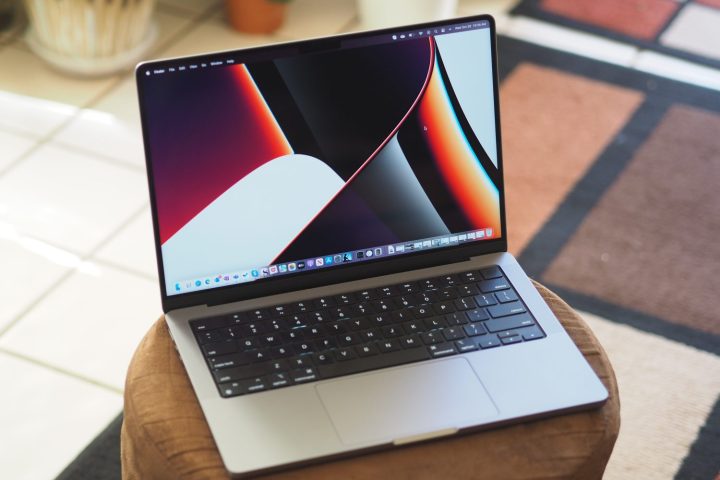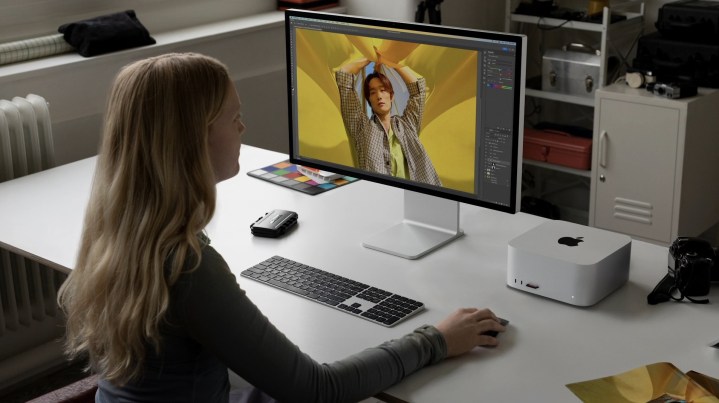I’ve been using Windows since Version 1.0, bridging the great divide between command-line computing and the graphical user interface. I never gave the Mac a try because it didn’t support my business environment, and in the beginning, I enjoyed cobbling together components and squeezing out every ounce of performance. I was also a bit of a Windows snob, taking offense at Apple’s Mac versus PC commercials and its generally superior attitude over the years.
But lately, I’ve used macOS more often and have grown ever more weary of some aspects of Windows that seem like they’ll never go away. So, after a bit of soul searching and financial planning, I’ve decided to switch to an all-Apple computing environment. Like lots of people in the past couple of years, the Mac renaissance has caught my attention — and led me to do the unthinkable: say goodbye to Windows.
It all started with my MacBook Pro

My journey toward the full embrace of Mac started innocently enough. A lot of positive press was being given to the MacBook Pro last year, and I wanted to know for myself how well it compared to the best of Windows laptops. So I bought a MacBook Pro 14-inch, thinking it would be an interesting addition to my ecosystem of tech and keep me nimble on what Apple was up to.
But the more time I spent with it, the more I fell in love with the hardware. More and more, it was becoming my go-to laptop when I wasn’t working on some other device for a review. There’s a lot these MacBook Pros offer, but for me, I began to realize there were two primary things drawing me to pick it up versus one of the many Windows laptops I have on hand.
First is the keyboard. I need a keyboard that, for whatever reason, lets me type at full speed without wearing me out. When you type as many words as I do in order to make a living, you need exactly the right feel to maintain peak efficiency.
Second is the display. I not only type a lot of words, but I stare at them for hours a day. Gray text that doesn’t pop against an off-white background is another recipe for fatigue and lost productivity. I need a display with the highest possible contrast and with clear white backgrounds.
The latest MacBook Pros offer the very best of both. The Magic Keyboard is the best keyboard around, and I say that after reviewing 250 laptops over the last several years. And that mini-LED display is superb, with inky blacks and sharp text.
Those two standout features, on top of everything else the MacBook Pro is excellent at, kept me coming back. I realize those are very personal reasons, but for me and my life, they’re essential.
That’s far from the end of the journey, though.
The biggest leap

In addition to my MacBook Pro 14, I also have an iPad Pro 11 outfitted with the Magic Keyboard and Apple Pencil. The iPad is for casual use, like web browsing, triaging email, and writing quick notes as ideas come to me. It’s a surprisingly capable little device I’ve grown fond of over the last several months. I’ll write about how well it can serve as a “real PC” in an upcoming story — but suffice it to say, it’s found a way into my daily life.
That means that I was already two-thirds of the way to all-Apple computing. The holdout has been my Windows desktop, a fairly powerful machine I use for my most personal tasks, such as managing my finances and various projects outside my technology writing.
The thing is, I use three 27-inch 4K displays with that desktop, creating a workflow that would be hard to give up. My MacBook Pro 14 uses the M1 Pro chipset, which supports just two external displays in addition to the internal panel. While I could drop one of the external monitors and position the MacBook Pro as my third display, I don’t want to give up the screen size. I’ve used laptops in this configuration before and always found the transition from large to small displays quite jarring.
Also, when I migrate from stationary to mobile work, I don’t want to hassle with plugging and unplugging two displays and a few other peripherals. And really, working in macOS and then switching to Windows for the same workflow isn’t ideal.
That led me to look at Apple’s desktop options. I considered the Mac Mini and the Mac Studio, both of which can handle at least my three current displays. That requires the most powerful Mac Mini, though, which is as expensive as the base Mac Studio in the configuration I’d want to buy. That would net me an M2 Pro chipset versus the M2 Max in the more capable Mac Studio, which makes me question Apple’s marketing. But I digress.
As I conducted more research, I remembered to consider Apple’s refurbished machines, which have a strong reputation for being as good as new. The Mac Studio has been around since June 2023, meaning quite a few refurb options are available. I found the base Mac Studio M2 Ultra available for $3,399, $600 off the retail price. I’m also eligible for Apple’s military discount, which lowered the price to $3,059. That’s $940 off of list. The M2 Max wasn’t available at such a steep discount, making the M2 Ultra version a better relative value.
After serious consideration, I decided to invest in the M2 Ultra version, which I’m working on right now. I’ll get into more detail about the experience as time goes on, but for now, I can say that I like the machine.
macOS frustrates me the least

Of course, hardware isn’t the only thing to keep in mind when making a major transition with your tech. Software, compatibility, and app ecosystems are arguably even more important. As I was making my slow transition to an all-Apple setup, there were plenty of times when I was jumping back-and-forth between macOS and Windows — sometimes even side by side. It was an illuminating experience, leaving me with some surprising observations about my experience with the two.
When it comes down to it, neither Windows nor macOS is a perfect operating system. Each has bits and pieces that I like and some that I dislike. I love touch gestures on Mac, but prefer the multi-window multitasking of Windows 11. I could go on and on, but both Windows 11 and macOS work well enough that I can get my work done on either.
However, I can’t ignore the fact that Windows 11 has been considerably more finicky and a lot less reliable. It has also begun to feel a lot less coherent by comparison. I’ve grown tired, for example, of remembering where to change a setting. Is it in the new Settings app or the old-school Control Center? It’s unacceptable that Windows 11 still hasn’t integrated everything into one place. Here I go digressing again.
The point is that Windows has no standout feature that makes me want to stick with it. The result: a migration to Apple has become a lot more attractive than it had previously been. There’s less dividing the two than there used to be, making it a lot easier to justify a switch to Mac than in the past.
All but my smartphone
I’m not quite ready to grab an iPhone to replace my Android smartphone. I’m not against it, but as my wife would agree, I’ve already spent enough money on this transition.
So now, I’m using all Apple machines for my computing work, from the most intense to the most casual. It’s early, but so far, I’ve enjoyed working in the same environment as I step away from my desktop and pull out my laptop.
Of course, I’ll continue using Windows extensively when I’m reviewing laptops, which will keep me up to date on Microsoft’s environment. But that still leaves quite a bit of work to get done. And for that, I’ve stepped over to what I would have once considered the dark side of computing. I never thought I’d be here — but that should tell you just how much the tables have turned over the years.
Editors' Recommendations
"loyalty" - Google News
December 21, 2023 at 09:45PM
https://ift.tt/8p2eUab
After decades of Windows loyalty, I’m switching to Mac - Digital Trends
"loyalty" - Google News
https://ift.tt/j8cMXRD
https://ift.tt/Qsmj5wl
Bagikan Berita Ini














0 Response to "After decades of Windows loyalty, I’m switching to Mac - Digital Trends"
Post a Comment